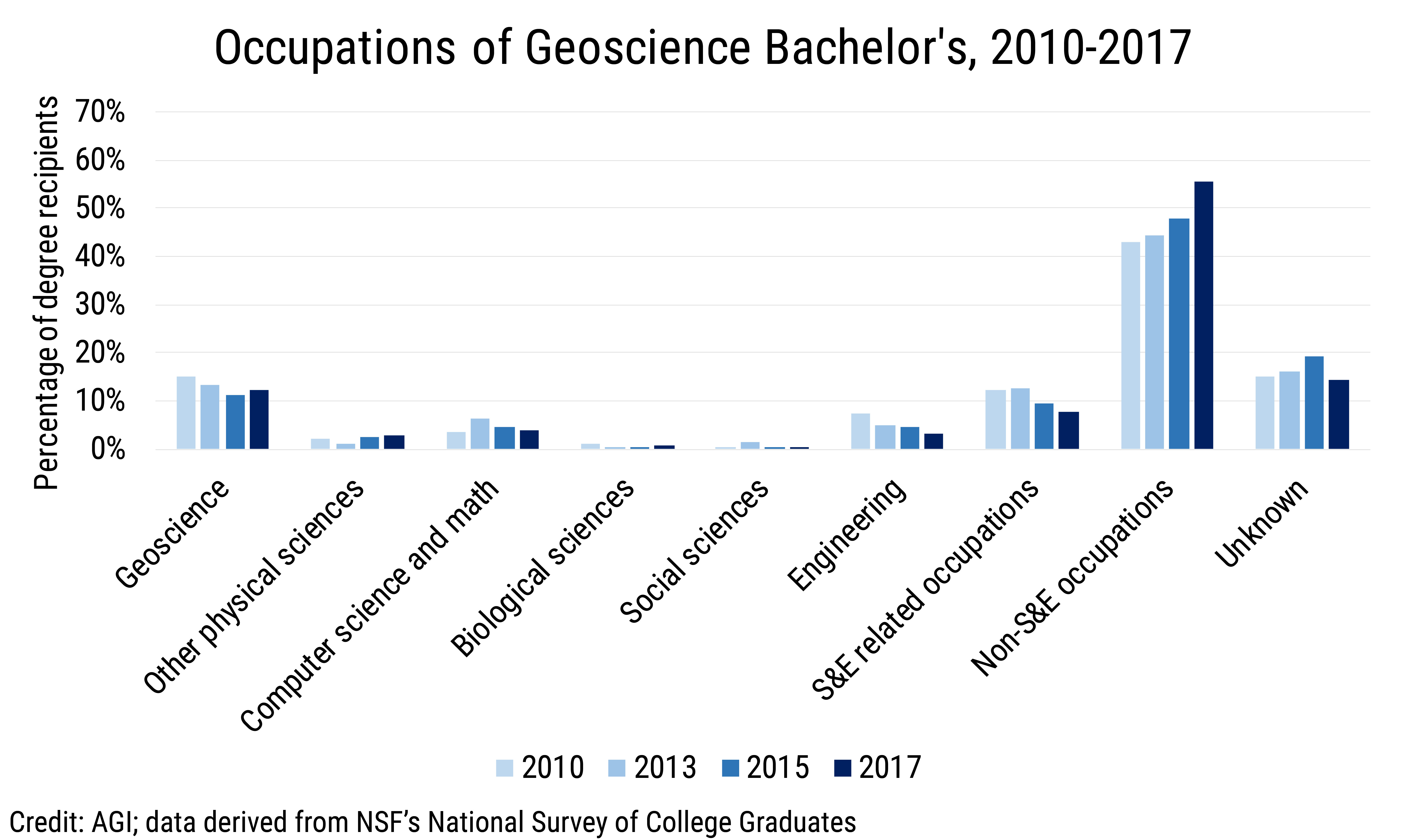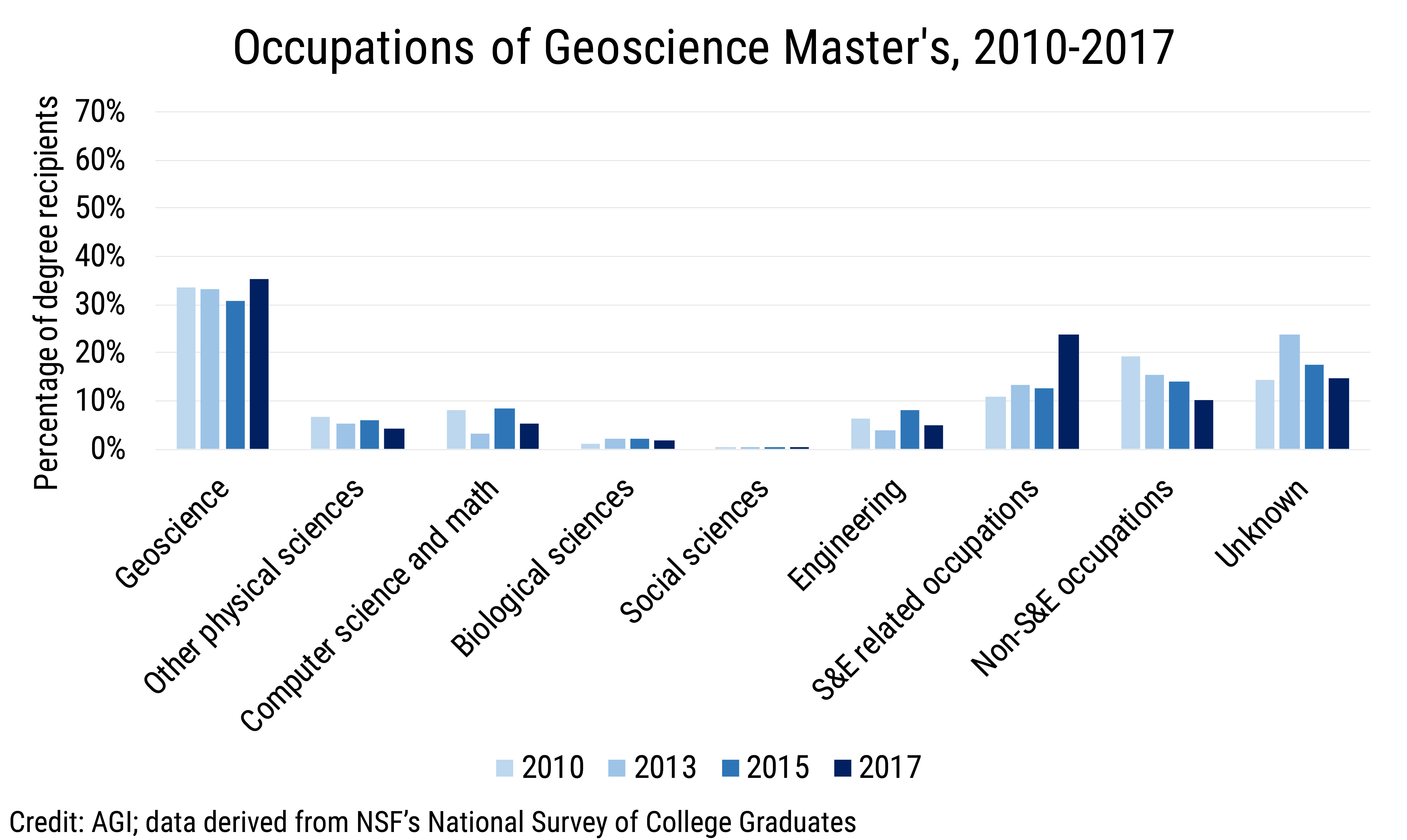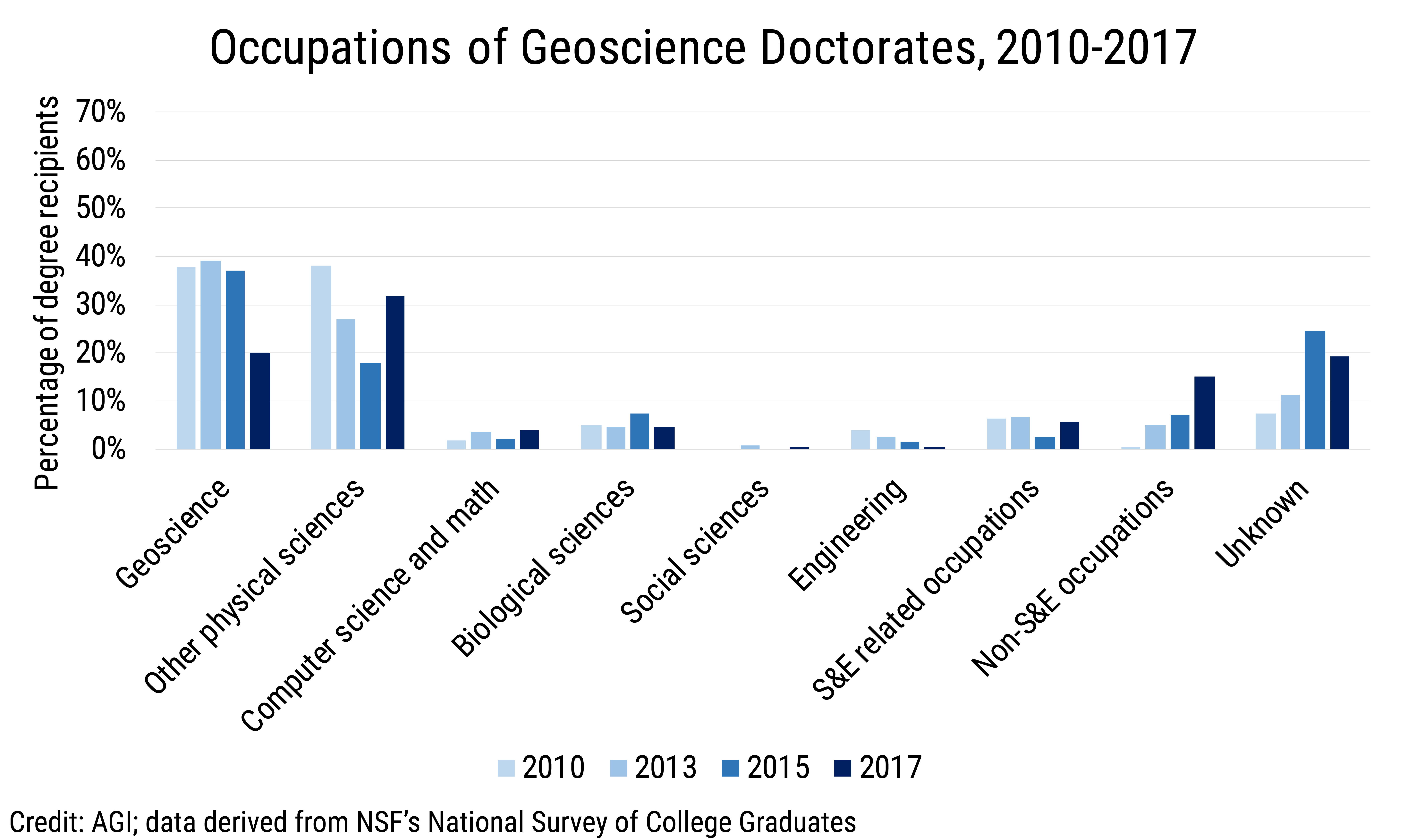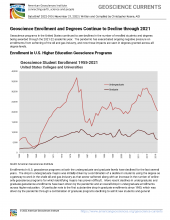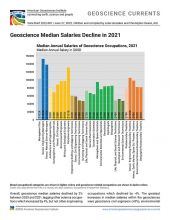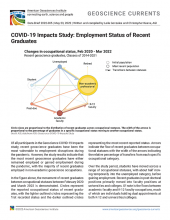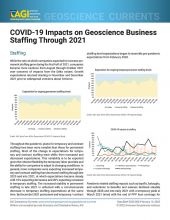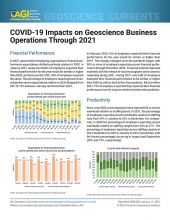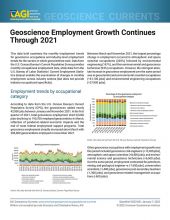We examined data from the National Science Foundation’s National Survey of College Graduates to understand how geoscience terminal degree recipients' occupations have changed over the past decade. This data is not limited to recent graduates, but rather covers all individuals with terminal degrees in the geosciences regardless of when they received their degree.
Between 2010 and 2017, the percentage of all geoscience degree recipients working in their core field decreased from 23% to 19%. This trend is primarily driven by the rate of bachelor’s degree recipients working in their core field over this time period, reflecting employment changes following the Great Recession and more recent softening of the oil and gas sector.
The percentage of geoscience bachelor’s degree recipients working as geoscientists has declined from 15% in 2010 to 12% in 2017. Of note is the substantial increase in geoscience bachelor’s degree recipients working in non-science and engineering fields, primarily in other non-science and engineering occupations, management and related occupations, and sales and marketing. The percentage of geoscience bachelor’s degree recipients with unknown occupational status, representing those either not employed or not seeking employment and thus effectively out of the workforce, increased from 15% in 2010 to 19% in 2015, decreasing to 14% in 2017.
Since 2010, the percentage of geoscience master’s degree recipients working as geoscientists has remained near 35%. Over this time period, the percentage of geoscience master’s degree recipients working in science and engineering related occupations increased from 11% in 2010 to 24% in 2017. This change was primarily driven by the increase in those working as science and engineering pre-college teachers and science and engineering technicians. Geoscience master’s degree recipients working in non-science and engineering occupations decreased from 19% in 2010 to 10% in 2017, and this was primarily due to the decrease in those working in non-science and engineering management and related occupations.
Since 2010, the percentage of geoscience doctorate recipients working as geoscientists declined from 38% in 2010 to 20% in 2017. Those working in other physical science occupations declined from 38% in 2010 to 18% in 2015 and then increased to 32% in 2017. The fluctuation in this occupational category was due primarily to those working as geoscience post-secondary teachers. Of note is the percentage of geoscience doctorate recipients with unknown occupational status which represents those either not employed or not seeking employment, and this percentage increased from 7% in 2010 to 19% in 2017, peaking in 2015 at 24%.



